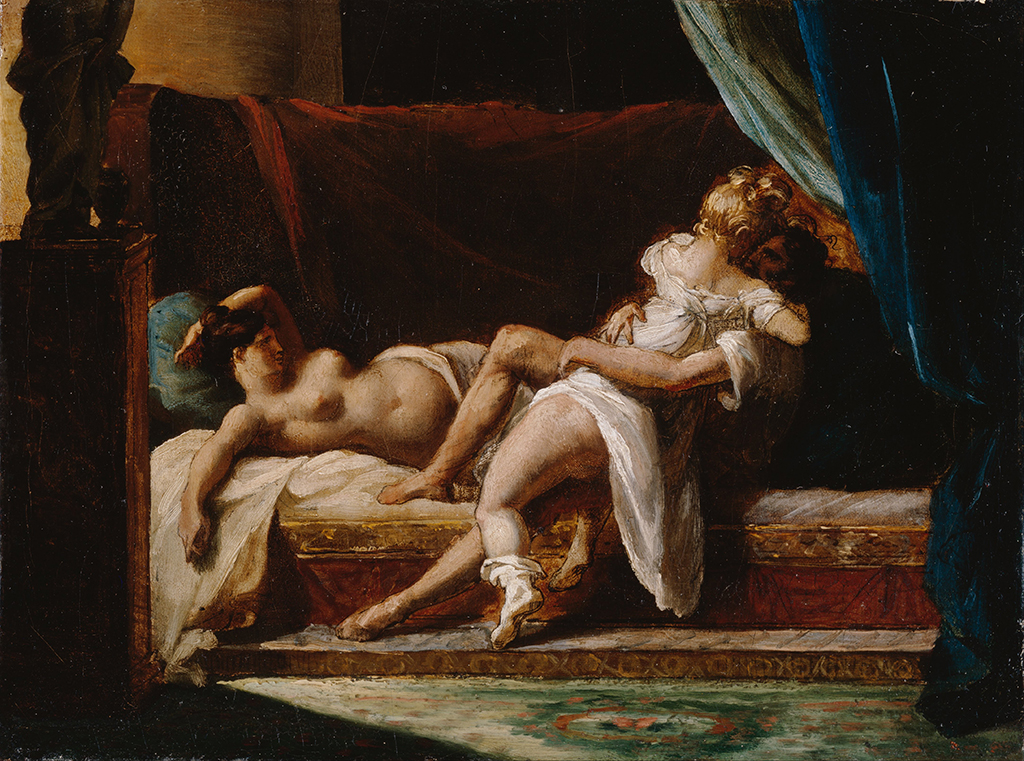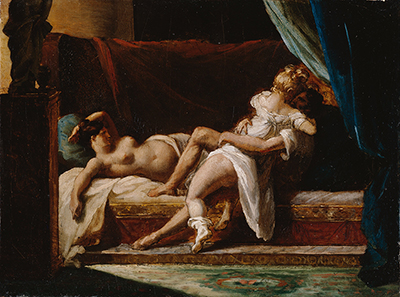Three Lovers is an unusual artwork within the career of Theodore Gericault, covering a topic that he did not cover at any other point.
Typically, he was an artist who would cover the same theme many times over several months or years, creating multiple study drawings and perhaps several different completed paintings around the same subject.
Three Lovers is Theodore Gericault's only known erotic painting. Given that Gericault would usually treat with a particular theme for months at a time, this seems an unusual exception. Nor can this painting be conclusively dated, though it probably originates from the years between 1817 and 1820. Its comparatively small size encourages speculation that Three Lovers was intended to be viewed closely, perhaps within quite a confined space. Despite a notably colourful personal life, Theodore Gericault most frequently painted around a theme of war, its glorification, and the physicality of man's war experience.
Within this painting, which is framed by the curtains around the bed almost as a stage might be framed, creating a sense of spectacle, it is the nude females whose roles are most striking. Every detail of Gericault's erotic scene is immediate: this owes much to his refusal to pre-prepare sketches of his leading figures. He painted always from life, with fine brush strokes and a warm colour palette. The third lover, the man, is barely visible beneath the loosely garmented woman he embraces: one gains a sense only of his dark mysterious profile, and the articulated muscles of a single leg.
Contrast these defined, masculine muscles with the voluptuousness of both women, and one gains a clear sense of male and female roles. Within Three Lovers, is is woman's ability to be soft and seductive that is evidently celebrated. The reposing female on the counterpane, with her arm languidly resting behind her head is slightly resonant of the neoclassical, yet perhaps the tender accuracy of the human forms hark all the way back to the old Masters, particularly Michelangelo. Venus, goddess of love was a central tenet of old classical work, and she was not infrequently depicted in this manner: three dimensional, with rounded arms, voluptuous breasts, stomach and thighs, abundant and motherly in all of her proportions.
Gericault appears to wish to celebrate all that is female: the woman making love to her partner embraces him with both of her legs, whilst her comrade appears to enjoy a state of reposing post-coital bliss. Every detail of the partially clad woman is profoundly human, from the warm lightness of her hair, to the way it curls at the nape of her neck. The portion of her back revealed by the light garment she wears is similarly engaging: Gericault simultaneously creates a sense of the slenderness of the bones, and the softness of the flesh. Two centuries later, he depicts a woman who is vulnerable yet glorious in her truest manifestation of herself as lover.





